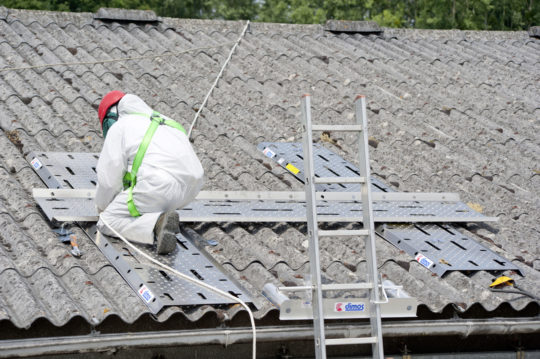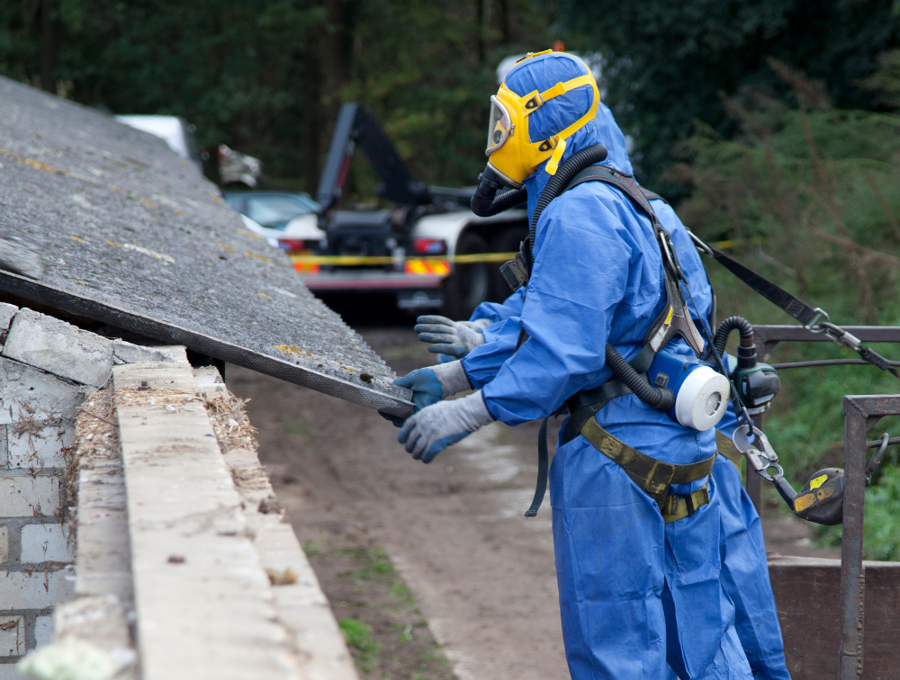Asbestos Roof Removal Health Risks Cost Guide For Asbestos Removal
Asbestos Roof Removal Health Risks Cost Guide For Asbestos Removal
Blog Article
Local Regulations For Asbestos Handling Cost Guide For Asbestos Removal
Asbestos management plans are important instruments for the safe handling and control of asbestos materials in numerous environments. With the health risks associated with asbestos exposure, including lung disease and different severe respiratory conditions, having a comprehensive management plan is important for any facility that will include asbestos.
The creation of asbestos management plans entails an intensive assessment of the premises where asbestos may be current. This contains identifying the forms of materials that comprise asbestos and evaluating their condition. Regular inspections are needed as a result of the integrity of asbestos-containing materials can degrade over time, raising the risk of airborne asbestos fibers.

Once the assessment is performed, the plan should include clear procedures for managing asbestos safely. This includes guidelines on how to deal with, maintain, and, if needed, remove asbestos-containing materials. Proper labeling and signage are additionally essential to ensure that staff and visitors are aware of areas that will pose a risk.
Preventing Asbestos Contamination During Roof Work Removal & Replacement Of Roof Asbestos
Training and training play a big function in the successful implementation of asbestos management plans. Employees who might come into contact with asbestos must be educated about the hazards, safe work practices, and emergency procedures. Regular training sessions might help maintain safety on the forefront of office tradition.
The management plan should outline particular obligations for employees and management. Designating an asbestos coordinator can streamline the method of monitoring, reporting, and speaking about asbestos-related points. This particular person serves as some extent of contact for questions and concerns relating to asbestos safety.
Documentation is a key facet of asbestos management plans. Maintaining accurate records of inspections, incidents, training, and maintenance actions is important for accountability and ongoing risk assessment. This documentation can even show invaluable in case of regulatory inspections or legal inquiries.
Importance Of Professional Asbestos Removal Cost Guide For Asbestos Removal
In addition to identifying materials and implementing safe dealing with practices, the plan should outline response protocols for asbestos-related emergencies. Asbestos Roof Removal Health Risks. These protocols ought to embrace measures to follow within the event of a fabric breach or suspected fiber release. Providing clear steps might help mitigate risks and ensure swift action
Periodic evaluation and updating of the asbestos management plan are vital to replicate any modifications in regulations, workplace situations, or materials present. Continuous enchancment is essential to adapt to new data or technologies associated to asbestos safety. Stakeholders ought to be involved in this process to ensure that the plan remains related and effective.
Environmentally Friendly Practices For Asbestos Disposal Hazardous Materials & Disposal Services
Compliance with local and nationwide regulations regarding asbestos is non-negotiable. Organizations should stay informed about relevant laws and guidelines that govern asbestos dealing with and disposal. This helps keep away from legal penalties and enhances the overall safety culture inside the group.
Community awareness is one other important consider effective asbestos management plans. Engaging with local authorities, health businesses, and the community can foster a larger understanding of asbestos-related issues. This collaboration ensures that each one events are knowledgeable about potential risks and safety measures in place.
Asbestos management plans don't operate in isolation; they are part of a broader health and safety technique. By prioritizing the well-being of staff and the surrounding community, organizations can contribute to a safer environment. The integration of asbestos management with other safety protocols allows for a holistic approach to office safety.
Best Practices For Asbestos Roof Removal In Sydney Commercial Roofing Contractor For Removal
The objective of an asbestos management plan is not only compliance but also proactive risk management. By effectively figuring out hazards and implementing mitigation methods, organizations can considerably scale back the probability of asbestos exposure. This commitment to safety ultimately protects both staff and the underside line.
Effective communication concerning the asbestos management plan is important for fostering a culture of safety. Clear dissemination of knowledge ensures that everybody understands the risks and the measures in place to mitigate them. Providing transparent reporting channels encourages employees to voice concerns and contribute to safety efforts.
Finally, the importance of periodic monitoring cannot be overstated. Regular audits of the asbestos management plan assist identify areas for improvement and confirm that safety measures are adopted. Continuous analysis creates a suggestions loop, selling a safer working environment.
In abstract, asbestos management plans serve as crucial frameworks for controlling and managing the risks related to asbestos exposure. Through thorough assessment, effective communication, ongoing training, and regular updates, organizations can create safe environments for their staff and the community. The focus should always be on proactive measures, compliance with regulations, and a powerful safety tradition.
Environmental Impact Of Asbestos Roof Removal Costs Associated With Removal And Replacement
By ensuring that every facet of the plan is well-executed, organizations can significantly decrease the risks tied to asbestos materials. This ongoing commitment to safety will not solely protect individuals but also improve organizational status and belief.
Continuous adaptation and refinement of asbestos management plans will in the end lead to a more educated workforce that prioritizes safety above all. Such a tradition is essential for achieving long-term safety goals and guaranteeing the health of all stakeholders involved.
Safe Asbestos Roof Removal Techniques Removal & Replacement Of Roof Asbestos
Ultimately, the well-being of workers and the environment ought to guide the event and implementation of any asbestos management technique. By remaining vigilant and diligent in their method, organizations can navigate the complexities of asbestos management effectively.
In conclusion, the roadmap for asbestos safety is challenging however important. A carefully crafted and executed asbestos management plan, complete with thorough assessments, communication protocols, and ongoing training, lays the groundwork for a safe and compliant workplace. This proactive strategy fosters a protective environment for all those involved, solidifying the commitment to safety for the long run.
- Asbestos management plans outline protocols for identification, assessment, and management of asbestos-containing materials in varied settings, particularly in buildings.
- Regular inspections and risk assessments are critical elements of an asbestos management plan, guaranteeing ongoing monitoring and up to date info regarding potential hazards.
- Training for personnel on asbestos awareness and safety measures is important, ensuring that employees are knowledgeable concerning the risks and procedures related to asbestos exposure.
- Development and maintenance of an inventory of asbestos areas, types, and situations permit for knowledgeable decision-making when planning renovations or demolitions.
- Emergency response procedures tailored for asbestos-related incidents assist reduce health risks throughout sudden situations involving asbestos disturbance.
- Effective communication strategies within a corporation inform all stakeholders of asbestos management plans, highlighting obligations and inspiring a culture of safety.
- Documentation of all asbestos-related actions, including removal, encapsulation, or repair, is important for compliance with regulatory requirements and for future reference.
- Stakeholder engagement, together with occupants and neighboring properties, is important to raise awareness and address concerns relating to asbestos management and safety practices.
- Integrating asbestos management plans with general health and safety insurance policies can create a cohesive strategy to workplace safety and environmental health.
- Regular reviews and updates of the asbestos management plan guarantee relevance and effectiveness, adapting to any changes in regulations, building occupancy, or material condition.undefinedWhat are asbestos management plans?
Asbestos Roof Removal Service Reviews And Feedback Risks Associated With Asbestos Roofs

Asbestos management plans are documents that define tips on how to manage asbestos on a property. They detail the location, situation, and kinds of asbestos-containing materials, together with strategies for safe monitoring, maintenance, and mitigation.
Why do I want an asbestos management plan?
An asbestos management plan is essential for protecting health and safety. It ensures that all potential asbestos hazards are identified and managed appropriately, minimizing the risk of exposure to individuals on the property.
Asbestos Roof Removal Service Reviews And Feedback Removal & Replacement Of Roof Asbestos
Who is liable for creating an asbestos management plan?
Typically, the property proprietor or employer is answerable for growing and implementing an asbestos management plan. It is commonly beneficial to seek the advice of with certified professionals or licensed asbestos surveyors to make sure compliance with regulations.

How typically ought to my asbestos management plan be reviewed? Best Practices For Asbestos Roof Removal In Sydney.
Health Surveillance For Asbestos Workers How To Get Your Roof Replaced For Under 1000
Asbestos management plans ought to be reviewed no less than every 12 months or each time important adjustments happen on the property, similar to renovations or harm to areas containing asbestos. This ensures that the plan remains up-to-date and effective.
What should I do if my asbestos management plan identifies risks?
If risks are recognized, instant motion ought to be taken according to the plan. This may embrace repair, encapsulation, or removal of asbestos materials by licensed professionals, together with notifying affected people in regards to the risks and safety measures.
Can I manage asbestos points myself and not using a plan?
Educational Resources On Asbestos Safety What To Do If You Find Asbestos
It isn't advisable to manage asbestos issues with no formal plan. Improper dealing with can result in severe health risks and legal consequences. Consulting a qualified professional is important for safety and compliance with regulations.
How do I discover a certified professional for my asbestos management plan?
To find a qualified professional, search for licensed asbestos consultants or surveyors in your area. It is important to ascertain their certifications, expertise, and reviews to ensure they meet regulatory requirements and have an excellent track report of safety.
Local Regulations For Asbestos Handling Diy Awareness For Asbestos Removal
What occurs if I don’t have an asbestos management plan?
Lack of an asbestos management plan can lead to non-compliance with local regulations, leading to heavy fines, legal liability, and increased health risks for occupants. It is crucial to have an efficient plan in place to manage asbestos safely.
Is training required for these dealing with asbestos management plans?
Yes, individuals involved in managing asbestos should obtain appropriate training. This includes understanding the risks, the specifics of the management plan, and safe work practices. Regular training ensures everybody is ready to reply to potential asbestos points effectively.
navigate to these guys Get More Information Report this page